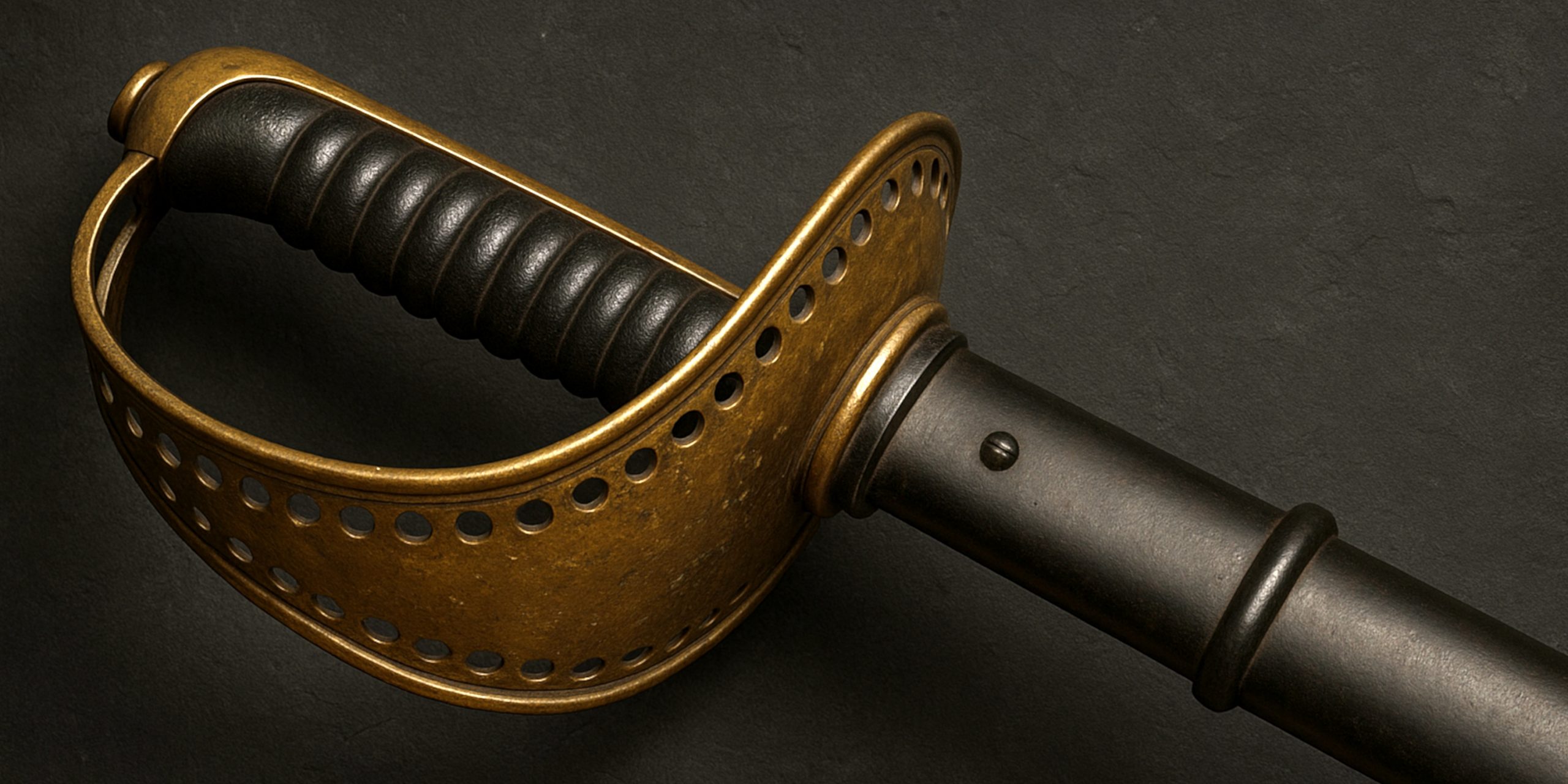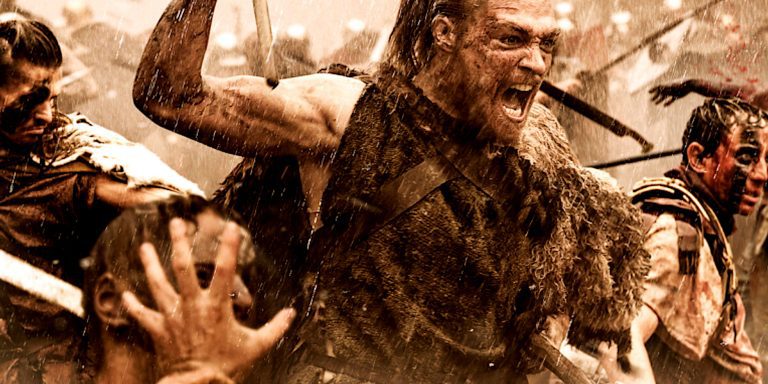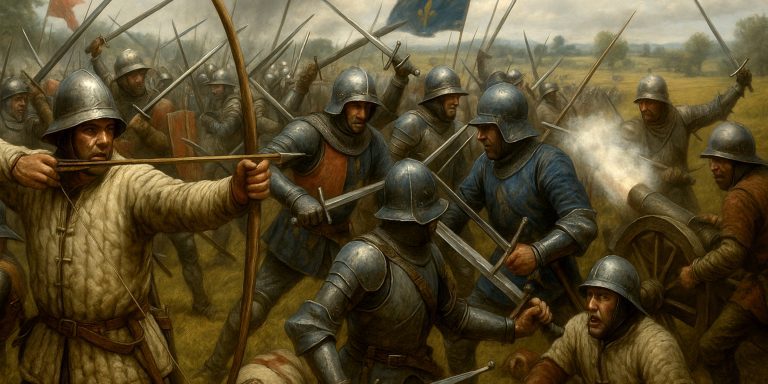
The Swedish Model 1893 cavalry sabre (m/1893) marked the last era of European service swords. Designed for the thrust, it carried a long, double-edged blade and a brass bowl guard with distinctive perforations. Produced mainly by E. Svalling of Eskilstuna, it served Sweden’s cavalry into the twentieth century before moving into ceremonial use.
Specifications
| Aspect | Details |
|---|---|
| Type | Cavalry pallasch (straight thrusting sabre) |
| Blade length | 93–95 cm |
| Overall length | 108–113 cm with scabbard |
| Weight | Approx. 1.0 kg |
| Edge | Double edged with central fuller |
| Guard | Brass bowl with perforations, rolled edge |
| Grip | Leather over wood, ribbed with wire wrap |
| Scabbard | Steel, often blackened or blued |
| Makers | E. Svalling, Eskilstuna |
History and Evolution
- Adoption: Introduced in 1893 to replace older curved patterns, reflecting a European shift to straight thrusting swords.
- Manufacture: Produced mainly in Eskilstuna. Markings include the maker’s name, crowns, and regimental stamps.
- Variants: Officer versions often had finer finishing. A 1918 Finnish-Swedish officer variant omitted the Swedish crown on the guard.
- Scabbards: Typically steel, later examples often blackened or blued.
- Service: Used into the early twentieth century and retained as a ceremonial weapon long after the sabre charge became obsolete.
Advantages and Disadvantages
Advantages
- Long, strong blade optimised for thrusting.
- Brass bowl guard provided excellent hand protection.
- Durable steel scabbard built for field service.
Disadvantages
- Length and weight made it awkward on foot or in confined spaces.
- Double edge was harder to maintain and could wear scabbard throats.
- Arrived too late to see much practical battlefield use.
Comparison with Similar Weapons
| Weapon | Country & Date | Comparison |
|---|---|---|
| British 1908 Cavalry Sword | Britain, 1908 | Even more thrust-specialised with a pistol grip. |
| German Kavalleriedegen 1889 | Germany, 1889 | Straight, thrusting sword but with different guard style. |
| French Officer Sabres 1882/1896 | France, 1880s–1890s | Lighter, more dress-oriented weapons. |
Legacy
The m/1893 reflects the final thinking of European cavalry on the eve of modern warfare. It embodies a transitional moment between the romantic ideal of the sabre charge and the brutal efficiency of industrial weapons. Today, it stands out for its distinctive brass guard and is a recognisable piece for collectors of late-period military swords.
Where to See
- Swedish Army Museum, Stockholm (Armémuseum)
- Regional military collections in Sweden
- Scandinavian auction archives and sales catalogues
Collectors’ Guide
What to Look For
- Maker’s mark: “E. Svalling, Eskilstuna” is the most common.
- Unit stamps: Swedish crowns and regimental codes.
- Guard: Brass bowl with perforations and rolled edge.
- Grip: Ribbed leather with wire wrap.
- Scabbard: Steel, often blackened or blued.
Red Flags
- Over-polished guards that have lost detail.
- Scabbards renumbered to match blades.
- Blades with erased or faint markings.
Market Values
| Condition | Typical Range |
|---|---|
| Trooper swords (average condition) | £150–£300 / $200–$400 |
| Trooper swords (clean with scabbard) | £300–£500 / $400–$600 |
| Officer variants | £400–£700 / $500–$800 |
| Rare 1918 Finnish-Swedish variant | Often above £700 / $900 |
Care Tips
- Preserve patina on brass and avoid heavy polishing.
- Use microcrystalline wax to protect steel surfaces.
- Keep the leather grip conditioned and wire secure.
- Avoid sharpening, which lowers historical and collector value.
Key Points at a Glance
- Last Swedish service sabre, adopted in 1893.
- Straight, double-edged blade with a long reach.
- Distinctive brass perforated guard.
- Manufactured by E. Svalling, Eskilstuna.
- Still appears regularly in auctions and collections.



